Introduction: Why Gold’s Future Matters
Imagine a world where economic uncertainty reigns, currencies waver, and investors scramble for safety. Now picture gold—shining, timeless, and unwavering—stepping into the spotlight. That’s the allure of gold: it thrives when chaos looms. But predicting its price six years from now? That’s a challenge worthy of a treasure hunt.
Table of Contents
In 2024, gold hit record highs, with prices hovering around $2,644 per ounce in Q4, driven by inflation fears and geopolitical unrest. But what happens by 2030? Will gold soar to new heights, or could it stumble under unexpected pressures? This post will explore:
- The key drivers that could push gold prices up or down.
- Expert forecasts from top analysts and institutions.
- Three potential scenarios—bullish, moderate, and bearish—for gold’s future.
- Practical tips for navigating the gold market as 2030 approaches.
Buckle up as we embark on this journey into the glittering unknown. Let’s uncover what the future might hold for gold prices!
Key Factors Shaping Gold Prices by 2030
Gold isn’t just a shiny commodity; it’s a reflection of the world around it. To predict its price in 2030, we need to dissect the forces at play. Here are the four big pillars that could define gold’s trajectory.
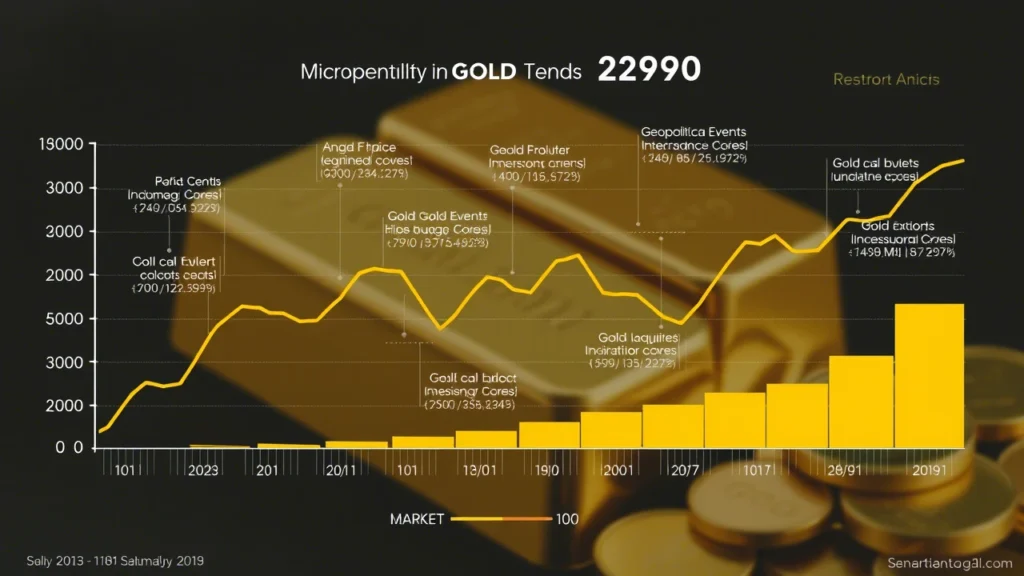
1. Economic Trends: Inflation, Interest Rates, and Currency Swings
Gold’s value often dances to the tune of economic conditions. When inflation spikes or currencies falter, gold tends to shine brighter. Here’s how these factors might play out by 2030:
- Inflation: If global inflation accelerates—say, due to supply chain woes or energy crises—gold could become a go-to hedge. Imagine a world where prices for everyday goods skyrocket; investors might pile into gold to protect their wealth.
- Interest Rates: Central banks like the Federal Reserve wield immense power over gold. Low rates make gold more appealing (since it doesn’t pay interest), while rate hikes could dampen its allure. By 2030, will rates stay low to spur growth, or rise to tame inflation?
- Currency Fluctuations: Gold is priced in U.S. dollars, so a weaker dollar often lifts gold prices. If the dollar loses ground—perhaps due to a shift toward digital currencies or a stronger yuan—gold could climb.
Expert Quote: “Gold thrives in an inflationary environment, which is why inflation is the foundation of our gold projections and not traditional metrics like supply and demand or economic outlooks.” – Analyst, StoneX Bullion
2. Geopolitical Events: Chaos as Gold’s Best Friend
History shows that when the world gets messy, gold gets busy. Geopolitical instability—think wars, trade spats, or political upheaval—often sends investors flocking to safe-haven assets.
- Conflicts: Picture escalating tensions in hotspots like Ukraine or the South China Sea. A major conflict could jolt gold prices upward as investors seek refuge.
- Trade Wars: Tariffs and sanctions disrupt global trade, creating uncertainty. If U.S.-China rivalry intensifies by 2030, gold might benefit.
- Political Instability: From populist uprisings to unpredictable elections, political chaos can boost gold’s appeal. Imagine a fractured global order—gold could be the steady hand investors grasp.
Expert Quote: “If policy uncertainty remains elevated or sustained concerns about tariffs continue to drive demand for safe-haven assets, speculative gold investing could push prices as high as $3,300 by December 2025.” – Lina Thomas, Goldman Sachs Research
3. Market Behaviors: Supply, Demand, and Sentiment
At its core, gold’s price hinges on the balance of supply and demand, spiced up by how investors feel about it.
- Supply Crunch: Gold mining isn’t what it used to be. Costs are soaring—the All-In Sustaining Cost (AISC) hit $1,343 per ounce in 2023—and new deposits are scarce. A tighter supply could nudge prices higher.
- Central Bank Demand: Emerging markets like India and Russia have been stockpiling gold to diversify away from the dollar. If this trend holds, it’s a bullish sign for 2030.
- Investor Sentiment: Gold faces competition from flashy newcomers like Bitcoin. Will it hold its own as the ultimate safe haven, or lose ground to “digital gold”?
Data Table: Historical Gold Prices and Key Events
| Year | Average Gold Price (USD/oz) | Key Event |
|---|---|---|
| 2000 | $279.11 | Dot-com bubble burst |
| 2010 | $1,224.53 | Financial crisis recovery |
| 2020 | $1,770.25 | COVID-19 pandemic |
| 2024 | $2,644.00 (Q4 average) | Inflation and geopolitics |
Source: World Gold Council
4. Technological Advancements: Double-Edged Sword
Technology could be gold’s ally or its foe by 2030. Innovations in mining and investing might shake things up.
- Mining Tech: New methods could unlock hard-to-reach gold, boosting supply and potentially lowering prices. But stricter environmental rules might keep a lid on output.
- Digital Rivals: Cryptocurrencies have some calling Bitcoin the “new gold.” If digital assets dominate by 2030, physical gold could take a hit—though its tangible charm might endure.
Expert Quote: “The digital gold narrative has also been eating into gold’s market cap. Still, the trend is up given how bullish the asset is.” – Analyst, PrimeXBT
Expert Predictions: What the Pros Say About 2030
So, what do the experts think? We’ve scoured reports and forecasts to bring you a spectrum of predictions for gold prices in 2030. Buckle up—there’s a wild range ahead.
Bullish Forecasts: Sky’s the Limit
- CoinCodex: Sees gold trading between $4,277.51 and $5,226.77, with a ceiling of $5,226.77.
- Coin Price Forecast: Predicts $5,119.00 at the start of 2030, climbing to $5,194.00 by year-end.
- InvestingHaven: Targets $5,155 by 2030, with stepping stones at $3,265 in 2025 and $3,805 in 2026.
- Charlie Morris: In The Rational Case for $7,000 Gold by 2030, he envisions gold hitting $7,000, fueled by its status as a top asset class.
Expert Quote: “Gold is the leading major asset class in the 21st century, which is an extraordinary achievement given that gold doesn’t pay a yield.” – Charlie Morris, Economist

Moderate Forecasts: Steady Growth
- LiteFinance: Projects $4,988.99–$5,194.00 by 2030, with a 2025 stop at $3,077.76.
- StoneX Bullion: Expects $5,150, with a range of $4,197.00–$4,381.00 by decade’s end.
- WalletInvestor: Less rosy, predicting $1,825.90–$1,833.66 by 2025, though long-term views lean higher.
Bearish Forecasts: Caution Ahead
- Traders Union: Sees a modest $2,741 by 2029, suggesting slower growth.
- Perplexity AI: Offers a conservative $3,000 in a worst-case scenario, stretching to 2050.
Data Table: Gold Price Predictions for 2030
| Source | Predicted Price Range (USD/oz) | Outlook |
|---|---|---|
| CoinCodex | $4,277.51 – $5,226.77 | Bullish |
| Coin Price Forecast | $5,119.00 – $5,194.00 | Bullish |
| InvestingHaven | $5,155.00 | Bullish |
| Charlie Morris | $7,000.00 | Very Bullish |
| LiteFinance | $4,988.99 – $5,194.00 | Moderate |
| StoneX Bullion | $5,150.00 | Moderate |
| Traders Union | $2,741.00 (by 2029) | Bearish |
Sources: Compiled from analyst reports
Three Scenarios for Gold in 2030
With so many variables, gold’s future could unfold in multiple ways. Here are three plausible scenarios:
Bullish Scenario: Gold Hits $7,000+
- What Drives It: Rampant inflation, prolonged wars, and central banks hoarding gold.
- What It Looks Like: Gold becomes the asset for wealth preservation, soaring past $7,000 per ounce.
- Odds: High if global chaos peaks, though it’s an outlier.
Moderate Scenario: Gold Lands at $5,000–$6,000
- What Drives It: Steady inflation, occasional geopolitical flare-ups, and solid demand.
- What It Looks Like: A balanced rise to $5,000–$6,000, reflecting current trends.
- Odds: Most likely, aligning with expert consensus.
Bearish Scenario: Gold Falters Below $3,000
- What Drives It: Mining breakthroughs, a robust dollar, or crypto dominance.
- What It Looks Like: Prices stagnate or dip, struggling to break $3,000.
- Odds: Less probable, but not impossible.
How to Prepare for Gold’s Future
Ready to ride the gold wave—or dodge the crash? Here’s how to position yourself:
- Diversify: Gold’s great, but don’t put all your eggs in one basket. Mix in stocks, bonds, and maybe a sprinkle of crypto.
- Watch the Signs: Track inflation, interest rates, and global news. They’re your crystal ball for gold.
- Think Long-Term: Gold shines over decades, not days. Patience could pay off.
- Stay Sharp: Follow analysts, read reports, and keep your finger on the market’s pulse.
Expert Quote: “Gold is a well-established asset, and a rather settled and slow-moving one. But caution is advisable because the gold price is unpredictable and can fluctuate even day to day.” – Analyst, PrimeXBT
FAQs: Your Gold Questions Answered
1. What are the main factors that influence gold prices?
Inflation, interest rates, currency shifts, geopolitical events, supply-demand dynamics, and investor mood all play a role.
2. Is gold a good investment for the long term?
Yes, if you’re after stability and an inflation hedge. But it’s not risk-free—prices can swing.
3. How can I invest in gold?
Options include physical gold (bars, coins), gold ETFs, mining stocks, or futures. Pick what suits your goals.
4. What are the risks of investing in gold?
Volatility, no income (like dividends), and storage costs for physical gold are key risks to weigh.
5. Could gold really hit $7,000 by 2030?
It’s possible under extreme conditions—think hyperinflation or global turmoil—but it’s a stretch.
Conclusion: Gold’s Glittering Horizon
As we peer into 2030, gold remains a tantalizing enigma. Will it soar to $7,000, settle at $5,000, or surprise us all? The answer lies in a tangled web of economics, politics, and human behavior. What’s clear is this: gold’s story is far from over.




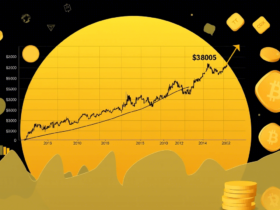
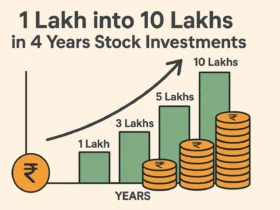


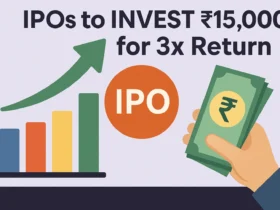

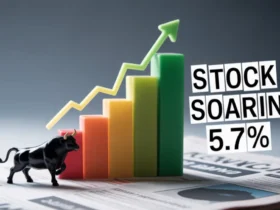

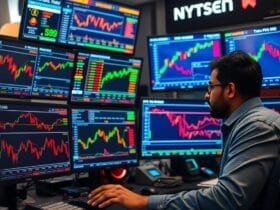

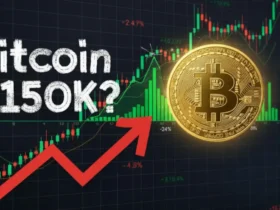




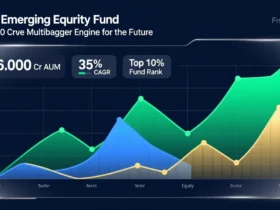
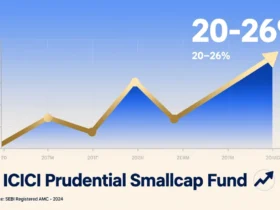
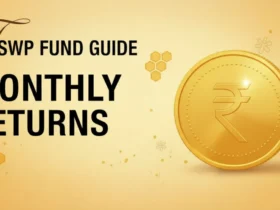

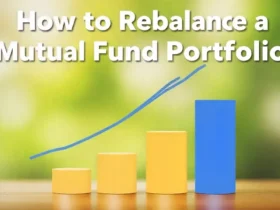






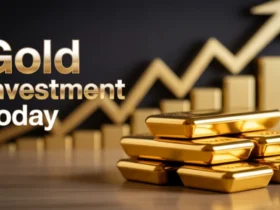
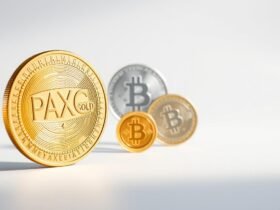

Leave a Reply